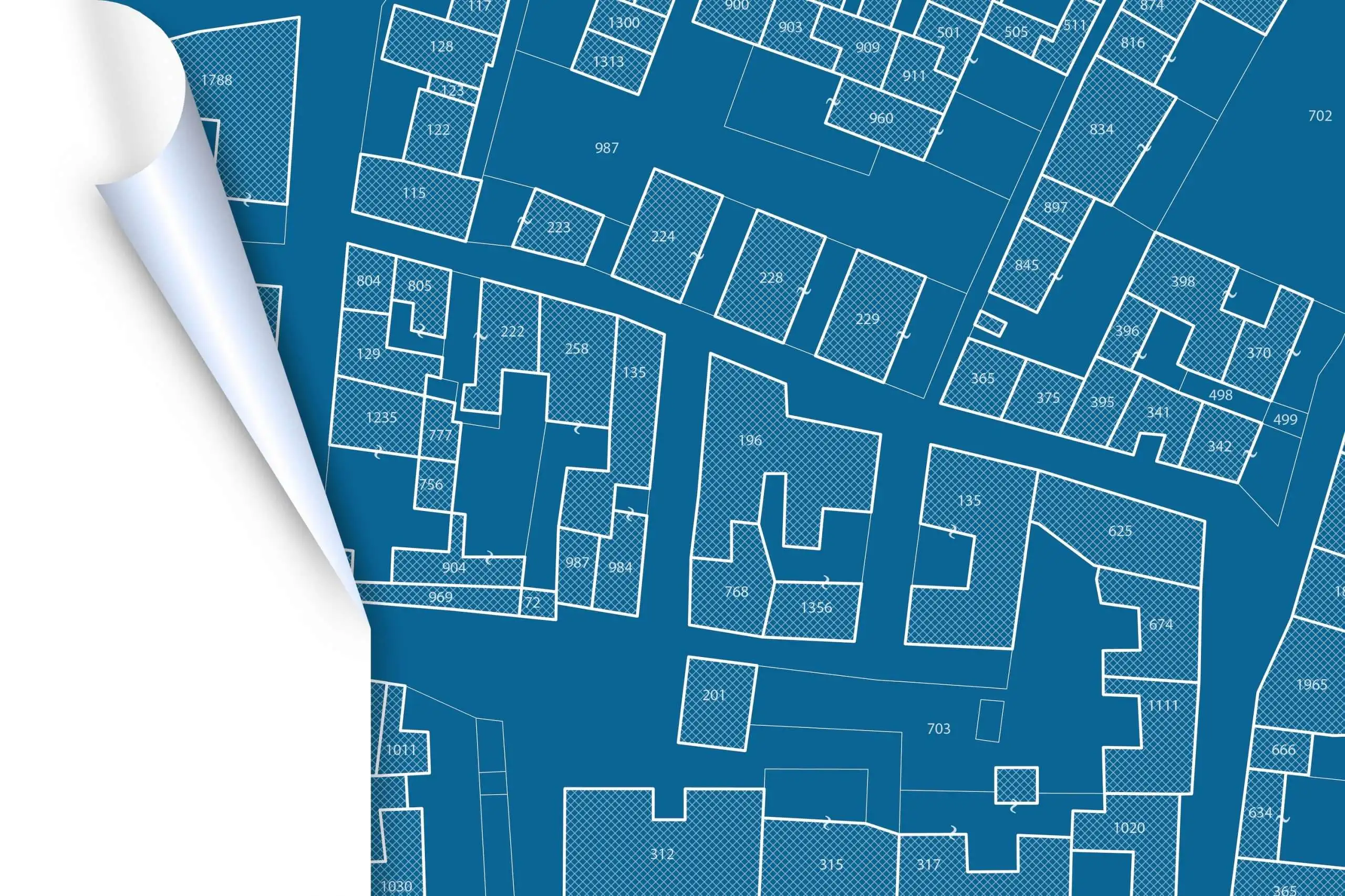
- 04 Sep-2024
Zoning: Measuring your home and zoning laws
Buyers usually do not measure their apartments, as they take the size given by the developer for granted. However, if they were to measure each room by applying the rule of geometry, they may be disappointed. An apartment defined by a developer as 165m2, for example, could, once measured by applying the rule of geometry, equal a total floor space of 145m2. Which number is right, and how should a property be measured? The first thing a prospective buyer can do is visit the Cadastre Department at the Moukarzel Building in Tabaris, to obtain a copy of the cadastral plan for the apartment. After LL5,000 for the plan and LL1,000 in stamps, the buyer can request a document concerning the area of the apartment. However, one may be disappointed again, as this could produce yet another figure for the apartment the buyer is interested in.
WHO HAS THE RIGHT FIGURES?
According to the Cadastre Department, organizations responsible for recording the official area of a property are the Municipalities of Beirut and Tripoli, as well as the General Directorate of Urban Planning and its branches. The Cadastre Department provides plans on a scale of 1/200, whereas plans from the municipalities and urban planning authorities are drawn to a scale of 1/50, and consequently are much more accurate. Variations that result from the two scales can change the official size of property by several square meters. Furthermore, the Cadastre Department measures only the area of an apartment, while urban planning authorities also include common areas, such as the stairwell in the block. This means that while the Cadastre Department may define the area of an apartment as 150m2, urban planning may add to this by including common areas. The additional areas are identified as Common Title Number Three. They may include shafts for ventilation and cables, a generator room, roof, corridors, elevators, main entrance hall, and columns below a building. Flower boxes outside a building, as well as any other areas considered common to all properties, are divided up and added to the size of each apartment.
ARE COMMON AREAS FOR SALE?
Some real estate analysts say that adding common areas to the size of the property is reasonable because the areas are used by all the residents and add to the value of the property. There is disagreement even among the professionals about the ownership of common areas. Some take the view that a buyer purchases whatever is part of an apartment and therefore this includes common areas. However, the General Directorate of Urban Planning stance is different. It maintains that since commons areas cannot be bought or sold, it follows that they cannot be considered as part of an apartment. Whatever the arguments, adding common areas remains common to all developers. The question though, is how they are measured and priced. One practice is that the buyer pays for common areas, provided these do not exceed an average of 20 percent of the area of the apartment. In such cases, the buyer should pay only one third of the price per square meter for the additional area.
AN ALTERNATIVE: ONE PRICE FOR ALL
For many developers, offering a package deal is one way to avoid the distress of having to count those square meters. For example, instead of pricing the bedroom at $700 per square meter, the balcony at $500, and the stairs at $400, a lump sum for the whole property replaces individual prices for areas. When this is the case, a project that offers a garden, parking lot, cellar, or other additional features, is priced at a slightly higher price per square meter overall. The difference depends on the marketing approach of the developer. The price of an apartment that includes a common area can be $700 per square meter, whereas the same apartment can be priced $1,000 per square meter without the common areas. However, can anyone buy an apartment without common areas? The obvious answer is that common areas are included in the total size of an apartment for sale.
ZONING DETERMINES THE FUNCTIONAL AREA
Zoning is the procedure by which authorities give permission for constructing the functional area on a plot. What proportion of the land can be used for the construction? What is the maximum area of total exploitation permitted? For this, coefficients have been set. However, not all of Lebanon is zoned. Moreover, two plots of lands in different areas carrying the same zoning nomenclature may actually belong to different zoning categories as each local government defines and names its zoning divisions differently.
ALL ABOUT RATIOS
Two ratios need defining. The Ground Exploitation Coefficient (GEC) is the maximum percentage footprint of a plot of land that a building can occupy. For example a 1,000m2 plot with a GEC of 30 percent means that the base of a building cannot exceed 300m2. GEC can range from five percent in agricultural areas to 100 percent in Beirut's zone 1. The Total Exploitation Coefficient (TEC) is a multiple of the whole plot that defines the maximum construction area on the site. Thus, a 1,000m2 plot with a TEC of 2 allows a maximum construction area of 2,000m2. That maximum does not include surface area underground (which is why there are so many deep holes in Beirut), balconies, and floors with pillars only. Furthermore, dividing the TEC by GEC determines the number of floors that can be built. That means that a building on a 1,000m2 plot with a TEC of 3.5 and a GEC of 50 percent can have a maximum of seven floors. If the constructors want to increase the number of floors to be built, they must reduce the GEC factor which means using less land. However, buildings cannot be built higher than 40 meters.
ZONED AREAS
Some areas of Lebanon are classified as zones and some are not. The only way to find out about a particular plot is to check the town planning office in the respective caza. Although an area has been classified it may not have been surveyed, and an area zoned 'A' in Beirut may not be the same sort of area as a zone 'A' in Tripoli. The General Directorate of Town Planning, a public sector institution within the Ministry of Public Works, suggests that all areas that have not been classified in Lebanon must adhere to a unified building code. That code stipulates the maximum GEC of any non-classified area at 30 percent and a TEC of 90 percent. However, some areas in the country have been granted immunity from those rules. Beirut is the most visible example where zoning limitations have been greatly relaxed with TEC factors often exceeding a multiple of two. In the Solidere area, the TEC multiple can go up to a factor of 12 for certain lots. While nomenclature differs from one jurisdiction to another, it is common practice to designate areas of heavy density as 'A', medium density as 'B', and sparsely inhabited areas as 'C'. Other zones include those that contain villas, industry, commerce, agriculture, forests, historic sites, tourist amenities, or other unspecified elements.
ZONING A NEW AREA
Establishing a new zone requires patience. The factors taken into consideration include the plans for the area, the relationship between population centers and their surrounding environmental concerns, and local agricultural activities. The new zoning will specify the intended use of land, its boundaries, and exactly what activities will be allowed. The specifications for each zone will include a GEC, TEC, and the minimum mandatory construction-free area between the boundaries of the plot and streets or adjacent land. The specifications will also include the maximum number of floors permitted and the total height of buildings. Once proposed, the municipality must approve a zoning application within one month. If the municipality fails to do so, the zone is taken as automatically approved. The file then goes to the Directorate, which studies the case for six months and transfers it to the Minister of Public Works, which in turn seeks the approval of the Council of Ministers. When it classifies a zone, the Directorate determines the area classified, allocates a zone number, specifies the type of occupancy (industrial, commercial, etc,) and delineates construction limits such as GEC, TEC, maximum number of floors, and so on.

